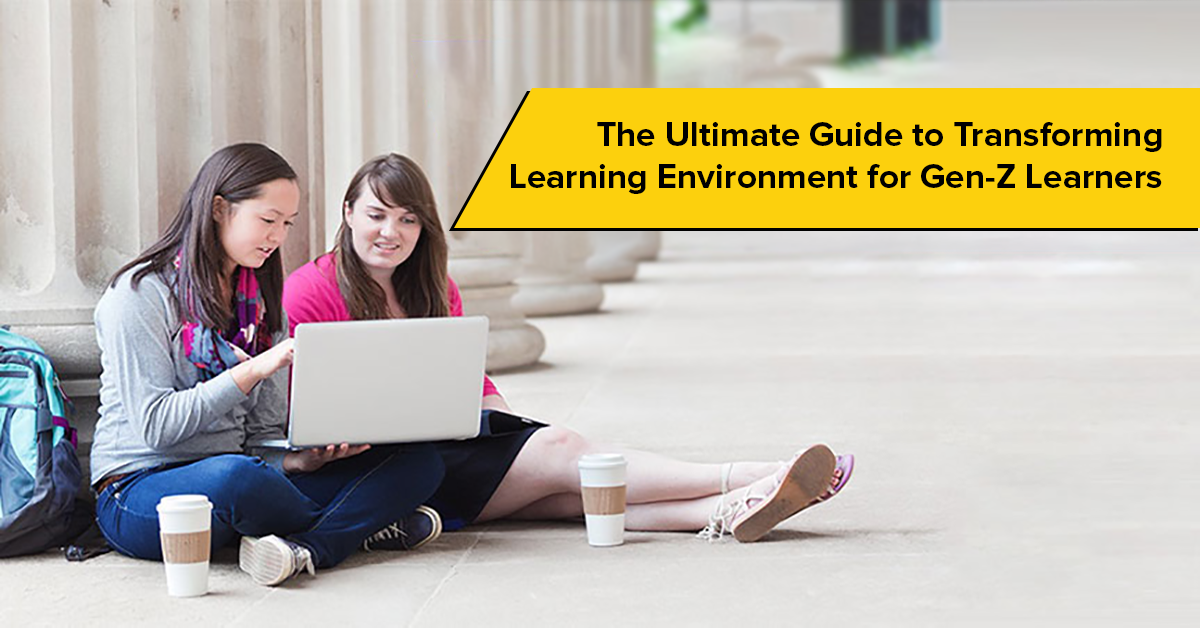Next Generation of Learners: 4 Steps to Transforming Learning Environment for Gen-Z Learners
Millennials must have been tech savvy, but today’s students are in a whole new league altogether. Today’s students have spent their entire lives surrounded by the latest technology inventions. But now the question is – how can higher ed institutions engage these students in classrooms? Do you think the old traditional classrooms and the same chalk and board lessons will help them understand the concepts?
No! They demand MORE. And, more than a demand, it is a need.
To ensure that students of today’s generation understand the lessons and concepts properly, higher ed institutions need to work by adapting new pedagogical approaches. Defining new curriculum and inclusion of technology in the classrooms are some of the initial steps to start with.
Personalized Learning
We all have heard a lot about it and many institutions are already making the most of it. From personalizing the Netflix shows to ordering food online, today’s students are accustomed to making everything personalized. And, trust me, they expect the same when it comes to learning. They expect to see lessons that are important per their previous understanding and lessons that can fill in their learning gaps.
The possibilities of technology personalizing lessons per the student needs are endless. Many institutions have started leveraging AI to know the needs of the students and analyze student data so that their very next lesson can be personalized per the student needs and requirements.
Video lessons
According to a study by Pearson titled “Beyond Millennials: The Next Generation of Learners”, Generation Z ranks YouTube and videos as preferred methods for learning by significant margins over Millennials. Unlike Millennials, today’s students don’t need to adapt to technology, they have been immersed in technology for they entire lives. Learning from modern tools like YouTube and other video learning methods come natural to them.
Higher ed institutions can leverage the best of both worlds; AI to analyze the student needs and video lessons to adapt per the modern student needs. It’ll indeed be fascinating to see how higher ed institutions use the amalgamation of both to serve the student needs in the coming future.
Connectivity Is a Must
As much today’s students love technology for social engagement beyond their campus life, they very much expect it to be on campus as well. Campus-wide connectivity through messages help students to know every notification right on their mobile devices. Institutions must invest in campus branded apps and keep the students notified about every update; be it around the college annual day or curriculum additions.
Interactive Sessions (You all saw this coming)
Reading from notebooks and indulging in cramming is not a thing for today’s students. Inclusion of Interactive sessions through collaborative technologies, including digital projectors and interactive whiteboards can keep the students engaged. Active-learning classrooms can help the students to stay engaged in sessions and avoid surface understanding of concepts. The audiovisual sessions, involving two-way communication, with the help of individual desktop screens to share learning material can help the students to stay engaged in the lesson.
The Bottom Line Is
It’s time the higher ed institutions understand the difference of generations and the way they learn. The next generation of learners expect the institutions to include technology solutions for learning and be more interactive when it comes to classroom sessions. Institutions that want to stay ahead the curve must understand the needs of their students and what can they do to support them. How are you planning to engage your students?

